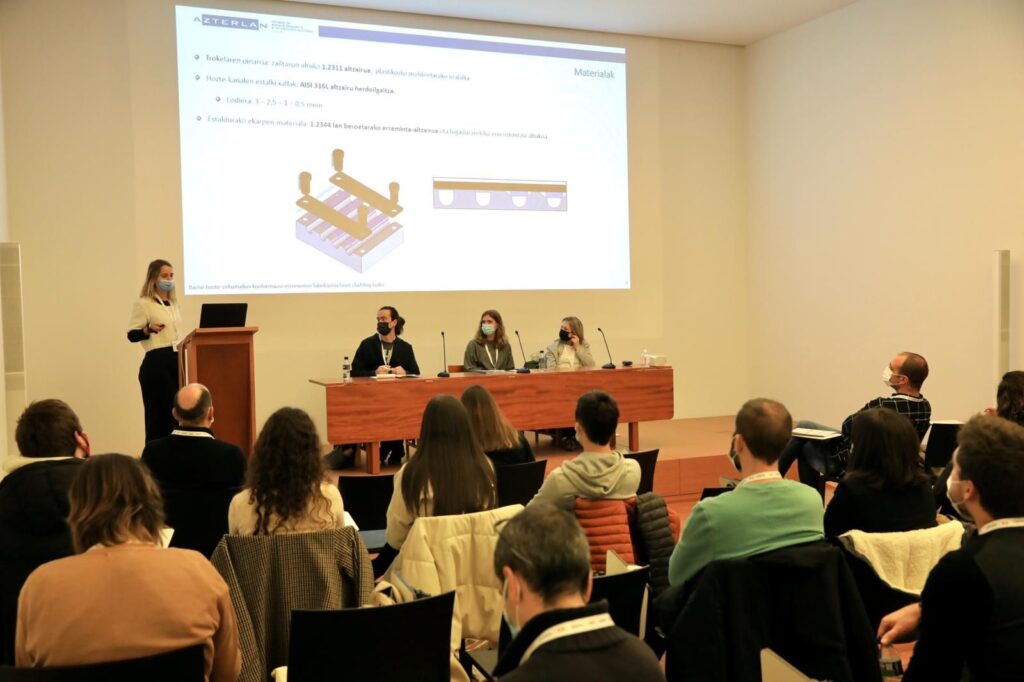Dr. Maider Muro (researcher from AZTERLAN Metallurgy Research Centre), has presented the work “Manufacture of forming tools with subcutaneous cooling circuits by laser cladding”, which includes part of the work carried out within the SUSIE research project.
In her presentation, Dr. Muro has shared some key factors regarding the manufacturing of a subcutaneous refrigeration system by means of Laser Metal Deposition (LMD technology). “When conceiving forming tools with this type of cooling channels, combinations of different materials with complementary properties are usually applied. A core material with high thermal conductivity, a wear-resistant surface and an internal corrosion resistant coating of the cooling circuits. Though it is difficult to combine these properties through conventional manufacturing technologies, laser cladding clearly offers new opportunities”.
In this context, AZTERLANŽs researcher has shared the “successful integration through laser deposition technologies of a 316L stainless steel, a 1.2311 tool steel and a coated wear-resistant 1.2344 steel”. This experience has been carried out giving an important boost to the objectives set in this ambitious collaborative research effort. “This experience has allowed us to determine the minimum thickness of the element to be coated without affecting its integrity nor its properties”.
This is, indeed, a fundamental aspect to achieve the integration of intelligent sensors in tool surfaces and areas of difficult access through additive manufacturing technologies. “Developing solutions to the problems associated with heat dissipation during the integration process and during the life service of manufacturing tools is a key step to integrate functional and reliable wiring and sensors into these demanding working environments”.
The Congress of Materials Science and Technology was held in Bilbao on November 29th – 30th. A reference event for the dissemination of the scientific work developed in the Basque Country.

Dr. Maider Muro during her presentation.

